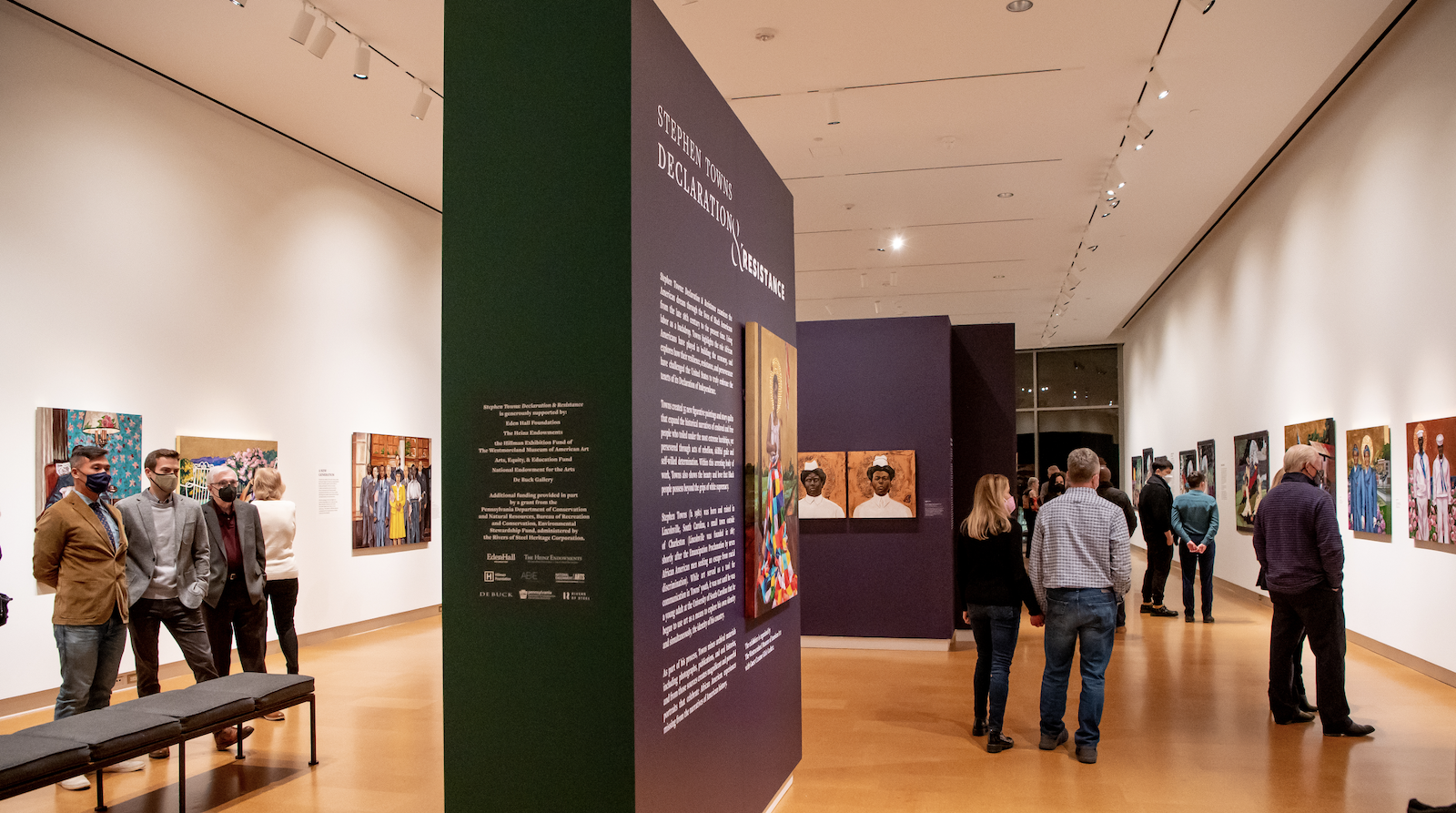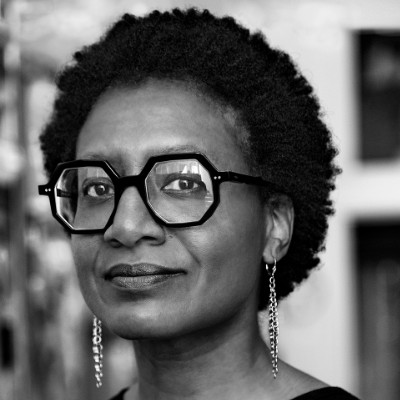Stephen Towns: Declaration & Resistance Exhibition Overview
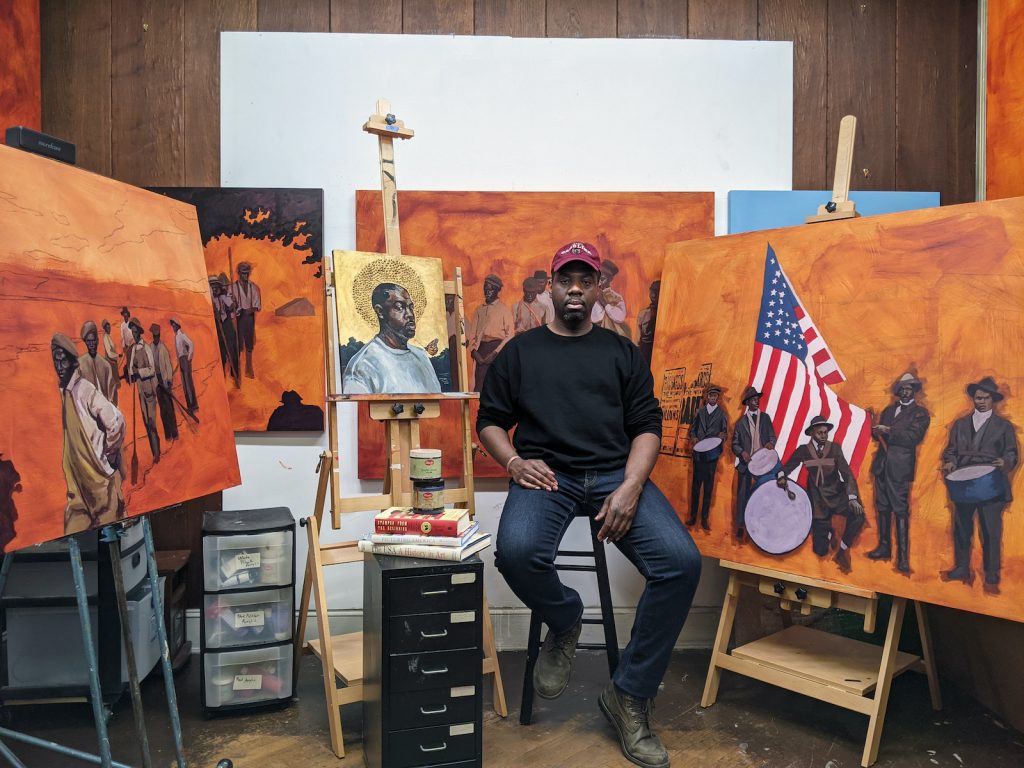
“Much of the work in Declaration & Resistance began when I was quarantining in the spring of 2020. I thought about how I had the privilege to take a step away from my work. When I returned to my studio, I reflected on how I had gained a deeper appreciation for essential workers risking their lives in the midst of a global health crisis. I come from a long line of laborers in Georgia and South Carolina. Prior to being a full-time Artist, I also worked many laborious jobs. This show is a testament to my ancestors and also the coworkers I have befriended along the way.” – Stephen Towns
Stephen Towns: Declaration & Resistance examines the American dream through the lives of Black Americans from the late 18th century to the present time. Using labor as a backdrop, Towns highlights the role African Americans have played in shaping the economy, and explores their resilience, resistance, and endurance that have challenged the United States to truly embrace the tenets of its Declaration of Independence.
Stephen Towns (b. 1980) was born and raised in Lincolnville, South Carolina a small town outside of Charleston, founded in 1867 shortly after the Emancipation Proclamation by seven African American men seeking an escape from racial discrimination. Towns, a quiet child, was the youngest of 11 siblings, and was encouraged to use art to express himself. While art served as a tool for communication in his youth, it was not until he was a young adult at the University of South Carolina that he realized art was also a means to explore his own identity and simultaneously, the identity of the nation.
In 2008, at the height of the recession, he was laid off from a hospital job and took the chance of relocating to Baltimore, MD. He set up a studio while working full-time at the Maryland Institute College of Art. It was during this time that he began to feed his passion for history as a means to understand the economic disparities of his new city.
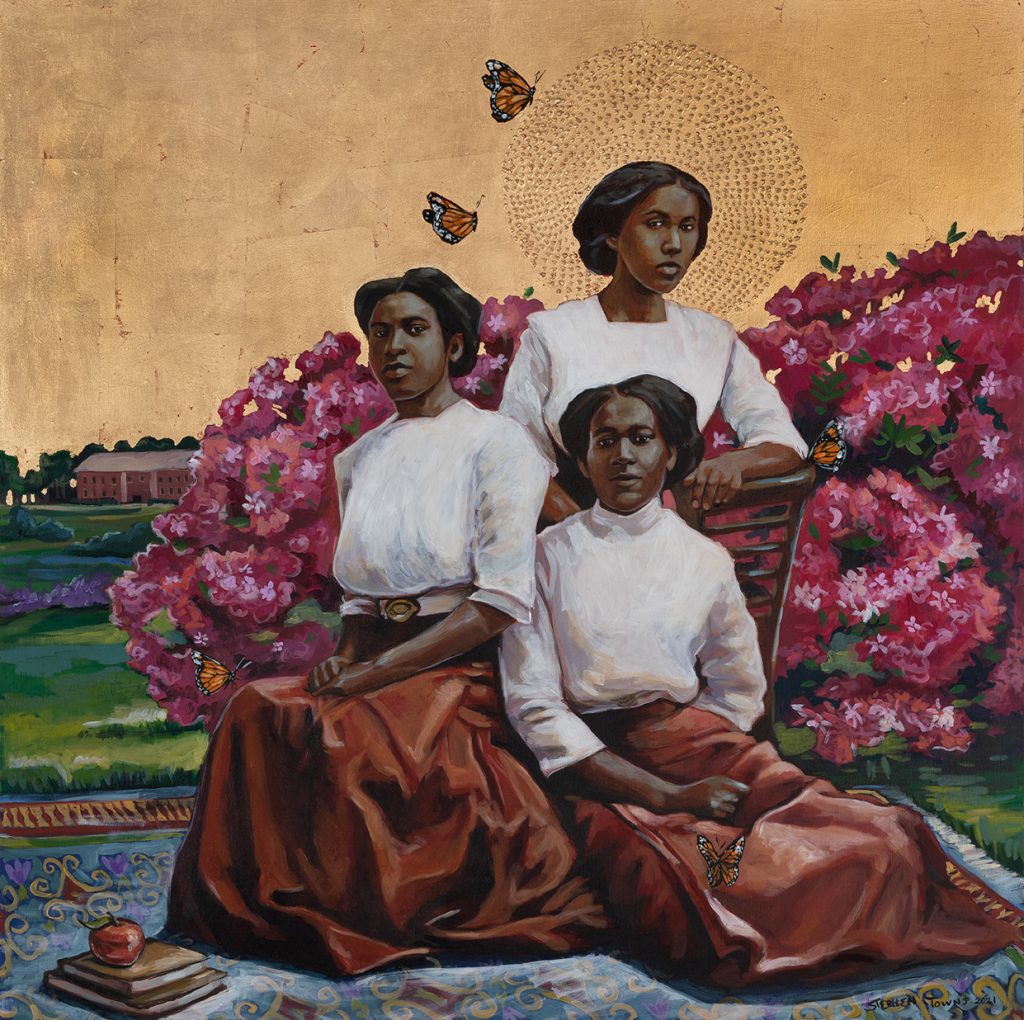
He began to mine archival materials, such as photographs and oral histories, and from those sources created regal and iconic portraits that celebrate African American experiences missing from the narratives of American history. Many of his portraits are elevated to a sainthood, often including the visual motif of a halo in gold leaf behind the subject.
Towns began to create the body of work for Declaration & Resistance in 2020 starting with the series entitled The Coal Miners, six distinctive mixed-media paintings that feature Black miners of West Virginia, who were relegated to the most difficult, underpaid, most dangerous and insecure jobs.
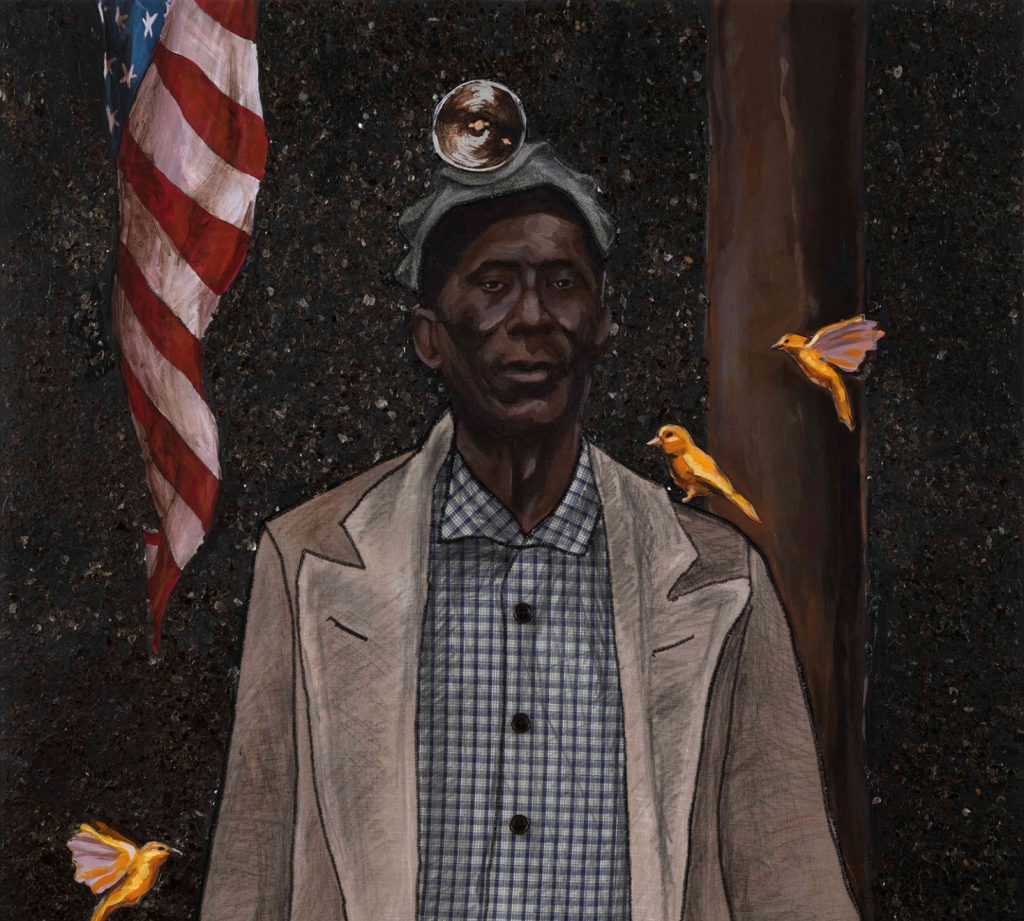
These men are portrayed stoically, surrounded by black mica to symbolize the coal mines with the American flag breaking the picture plane. Many of his portraits incorporate butterflies, a practice Towns started after reading the magical realism of Toni Morrison’s novels, which often included butterflies, bugs, and birds as symbols of metamorphosis and endurance. In The Coal Miners, rather than butterflies, Towns incorporates yellow canaries.
Towns also calls attention to the hidden figures who helped shape American cuisine. Among these works, the artist honors Ms. Elsie Henderson, who recently passed away at the incredible age of 107. Over the course of her life, Ms. Henderson used her culinary skills to nourish the appetites of several wealthy Pittsburgh families including the Kaufmanns, owners of the Frank Lloyd Wright-designed Fallingwater in Mill Run, PA. Towns participated in an artist residency program at Fallingwater in June 2021 where he researched the life and legacy of Ms. Henderson.
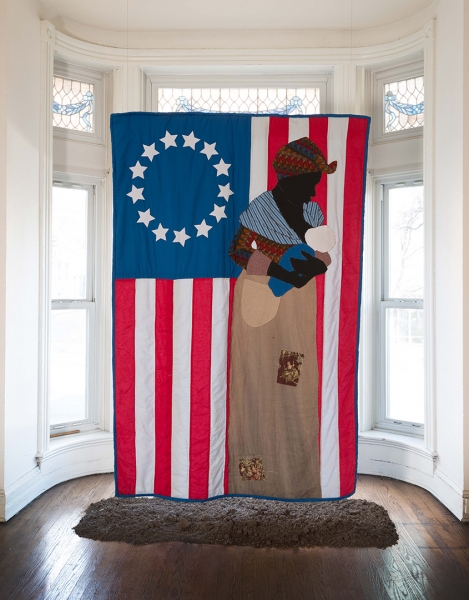
In addition to the new mixed media works produced for this exhibition, a significant portion of the exhibition is focused on Towns quilting practice. Towns began quilt making in 2014 with the installation quilt, Birth of a Nation. This artwork provides the foundation for the creation of Towns’ new series of quilts including a tribute to Ona Judge, a formerly enslaved servant and escapee from President George Washington’s plantation. Judge was an invaluable seamstress and body servant to Martha Washington, who as a teenager escaped Mount Vernon and fled to New England.
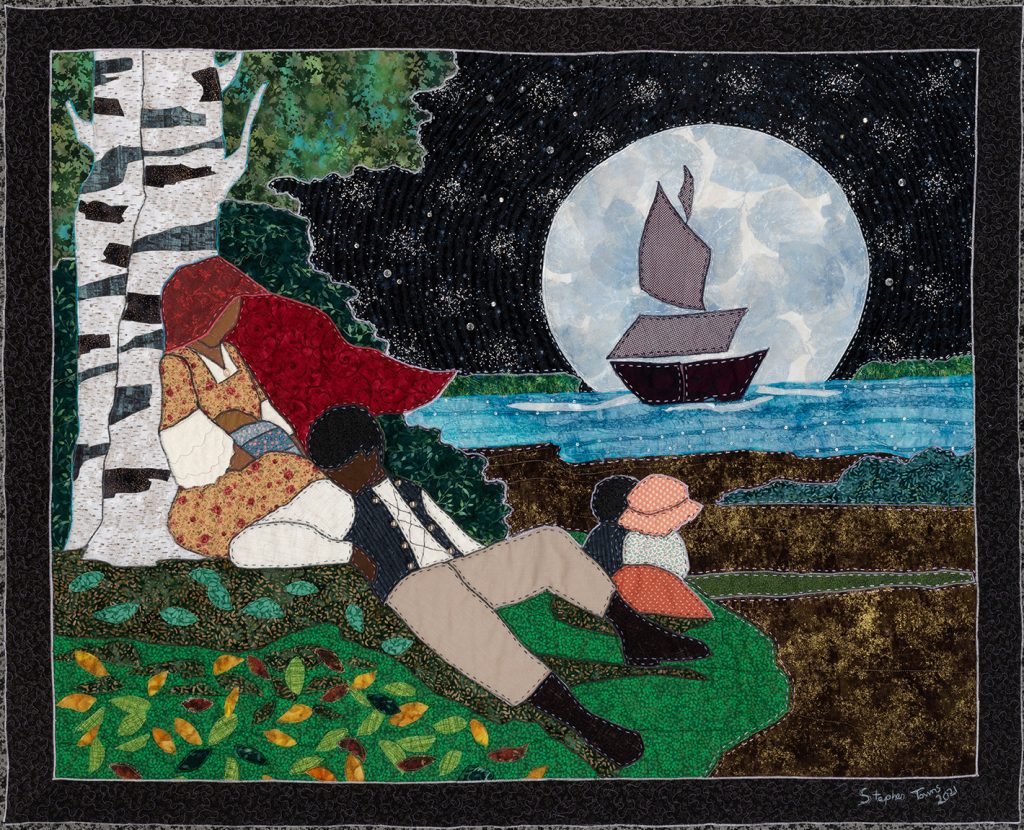
These are just some of the examples from the thirty-seven new figurative paintings and story quilts that along with existing work expand the historical narratives of enslaved and free people, who toiled under the most extreme hardships, yet persevered through acts of rebellion, skillful guile and self-willed determination.
The exhibition is organized by The Westmoreland Museum of American Art with guest curator Kilolo Luckett, Executive Director of ALMA|LEWIS, an experimental, contemporary art platform for critical thinking, dialogue and creative expression dedicated to Black culture.
The exhibition will also feature a documentary short film about Stephen and his process of creating these new works by Njaimeh Njie, photographer, filmmaker, and multimedia producer whose practice centers everyday people, narratives, and landscapes, with a particular focus on Black life, and how the past shapes the present. The exhibition will travel to the Boise Art Museum in Boise, ID in summer of 2022 and to the Reynolda House Museum of Art in Winston-Salem, NC in winter of 2023.
